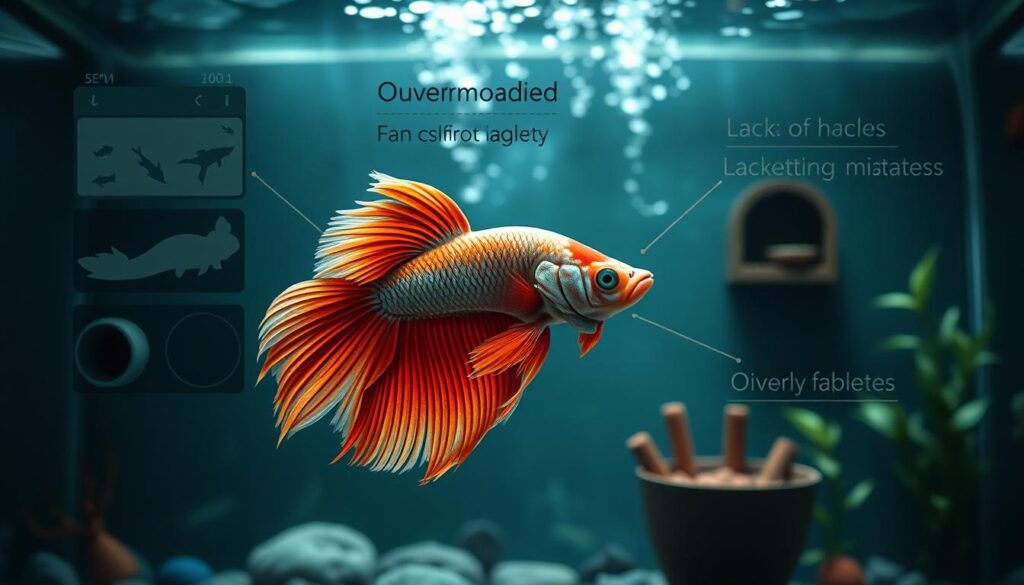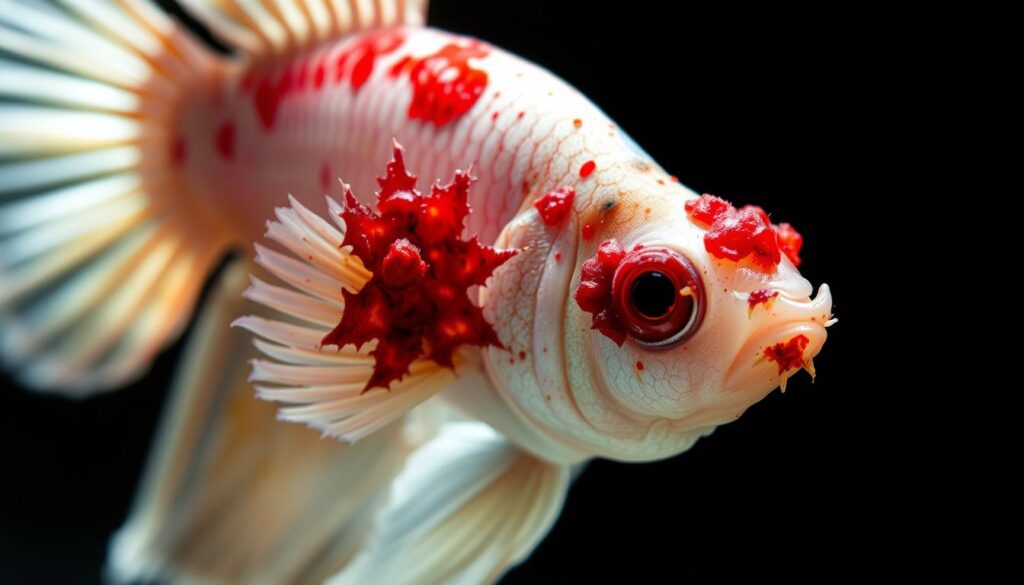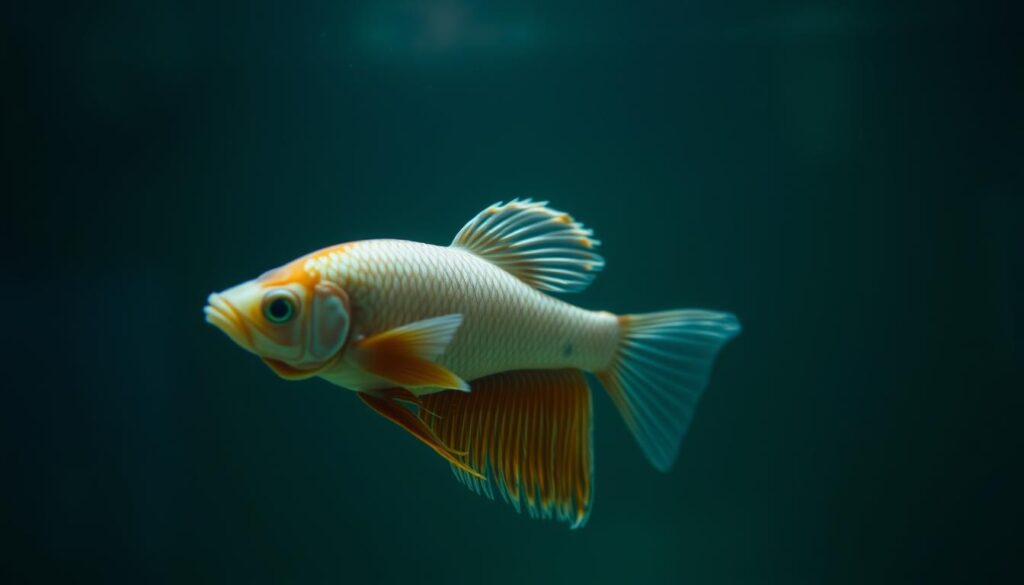Betta fish are beautiful and vibrant creatures, but like any pet, they can fall ill. Whether you’re a new betta owner or a seasoned fish keeper, knowing the betta fish diseases with pictures and treatment is crucial to keeping your aquatic friend healthy. In this guide, we’ll break down the most common betta fish illnesses, show you what they look like through clear images, and provide effective treatment options you can start right away. Don’t wait for things to get worse—let’s dive into the signs, causes, and cures so your betta can swim happily again.
In this article, we’ll explore common betta fish diseases, their symptoms, and effective treatments. By understanding these conditions, you’ll be better equipped to provide the best care for your pet.
Key Takeaways
- Common signs of illness in betta fish
- Effective treatments for betta fish diseases
- Preventive measures to keep your betta healthy
- How to identify diseases with pictures
- Tips for providing the best care for your betta fish
Understanding Betta Fish Health: Signs of a Healthy vs. Sick Betta
To keep your betta fish healthy, you need to know a few things. It’s all about recognizing the signs of a happy, healthy betta. A healthy betta is active, eats well, and thrives in its home.
Physical Appearance of a Healthy Betta
A healthy betta fish has vibrant colors and intact fins. If your betta’s colors are dull or its fins are frayed, it might be sick. Look for a betta with a strong body and no signs of damage or disease.
Behavioral Indicators of Good Health
A healthy betta is always on the move! They swim energetically and respond to you. If your betta is slow or always hiding, it might be sick.
Early Warning Signs of Disease
Watch for early warning signs of disease, like labored breathing, loss of appetite, or odd swimming. Catching these signs early can help treat your betta better.
When to Take Action
If you see any unusual signs or symptoms, act fast! Research the problem, adjust your betta’s environment, and seek expert advice if needed.
Common Causes of Betta Fish Diseases
Knowing what makes betta fish sick is key to caring for them. These fish are very sensitive to their surroundings. Several things can harm their health.
Poor Water Quality and Parameters
Poor water quality is a big reason for betta fish diseases. Regular water changes and keeping the tank clean are vital. Always check the water for ammonia, nitrite, and nitrate levels.
| Water Parameter | Ideal Range |
|---|---|
| Ammonia | 0 ppm |
| Nitrite | 0 ppm |
| Nitrate | < 20 ppm |
Inadequate Tank Conditions
Bad tank conditions, like small tank size or incorrect temperature, stress betta fish. This makes them more likely to get sick. Make sure your tank is at least 5 gallons and keep the temperature between 76-82°F.
Nutritional Deficiencies
Feeding your betta fish right is important. They need a balanced diet. Make sure to give them high-quality food and sometimes treats like bloodworms.
Stress Factors
Stress can come from many things, like aggressive tankmates, poor water quality, or 
By knowing and fixing these common problems, you can help your betta fish stay healthy and happy.
Bacterial Infections in Betta Fish
Bacterial infections are common in betta fish. They often happen because of bad water quality and stress. It’s key for betta owners to know the signs and treat them quickly.
We’ll look at three common bacterial infections in betta fish: fin and tail rot, columnaris (or cotton mouth disease), and popeye. Knowing about these will help keep your betta healthy and happy.
Fin and Tail Rot
Fin and tail rot is a bacterial infection that damages your betta’s fins and tail. It usually comes from bad water, stress, or injury.
Symptoms and Identification
To spot fin and tail rot, watch for these signs:
- Frayed or torn fins and tail
- Discoloration or whitening of the affected areas
- Lethargy or loss of appetite

To treat fin and tail rot, you need to improve the water quality and use antibacterial meds. Here’s how:
- Do a partial water change to better the water quality.
- Use a water conditioner to remove chlorine and chloramines.
- Give antibacterial medication, like kanamycin or metronidazole, as told.
Columnaris (Cotton Mouth Disease)
Columnaris, or cotton mouth disease, is a bacterial infection that hits the mouth and gills of betta fish. It spreads fast and can be deadly if not treated.
Symptoms and Identification
To spot columnaris, look for these signs:
- Cotton-like growths or lesions on the mouth or gills
- Excessive mucus production
- Lethargy or loss of appetite
Treatment Options
Columnaris needs quick action and the right meds. Here’s what to do:
- Keep the sick betta separate to stop the disease from spreading.
- Use antibacterial meds, such as kanamycin or metronidazole, as directed.
- Make the water better with regular changes.
Popeye
Popeye is a bacterial infection that makes your betta’s eye bulge or stick out. It’s often caused by bad water or injury.
Symptoms and Identification
To identify popeye, look for these signs:
- Bulging or protruding eyes
- Redness or inflammation around the affected eye(s)
- Lethargy or loss of appetite
Treatment Options
To treat popeye, you need to improve the water quality and use antibacterial meds. Here’s how:
- Do a partial water change to make the water better.
- Use a water conditioner to remove chlorine and chloramines.
- Give antibacterial medication, such as kanamycin or metronidazole, as directed.
Fungal Infections in Betta Fish
Fungal infections can be a big problem for betta fish. They often start after an illness or injury. These infections can show up as cotton wool disease and mouth fungus, which are very distressing for your betta.
Cotton Wool Disease
Cotton wool disease is a common fungal infection in betta fish. It looks like a fuzzy, white growth on the fish’s body, fins, or head.
Symptoms and Identification
The symptoms of cotton wool disease are easy to spot. You’ll see a cotton-like growth on your betta. This can also make your betta feel tired and not want to eat. If you see these signs, you need to act fast.
Treatment Options
To treat cotton wool disease, you need to improve the water quality and use antifungal medications. Use products made to fight fungal infections. Also, make sure to change the water regularly and keep the water parameters just right.
Mouth Fungus
Mouth fungus is another common infection in betta fish. It causes a fungal growth around the mouth, making it hard for your betta to eat.
Symptoms and Identification
The main sign of mouth fungus is the fungal growth around your betta’s mouth. This can make your betta eat less and lose weight. Catching it early is important for treatment.
Treatment Options
Like cotton wool disease, treating mouth fungus needs antifungal medication and better water quality. You might need to keep your betta separate to stop the infection from spreading and to treat it better.
Knowing about these fungal infections and how to treat them helps keep your betta healthy and happy. Keep a close eye on your betta and make sure the aquarium is clean and balanced. This is the best way to fight off these problems.

Parasitic Infections in Betta Fish
Parasitic infections are a big threat to betta fish health. We’ll dive into the details. These parasites can cause mild issues or serious problems. It’s important for betta owners to know about these parasites, their signs, and how to treat them.

Ich (White Spot Disease)
Ich, or White Spot Disease, is a common problem in betta fish. It’s caused by Ichthy ophthirius multi filiis.
Symptoms and Identification
Symptoms of Ich include:
- White spots on the fish’s body, fins, and gills
- Excessive scratching or rubbing against tank surfaces
- Lethargy and loss of appetite
To spot Ich, look for white spots and watch your betta’s behavior.
Treatment Options
Treating Ich means:
- Raising the tank temperature to 82-85°F (28-29°C)
- Using ich medication, such as formalin or malachite green
- Improving water quality through regular water changes
Quick treatment is key to avoid more problems.
Velvet Disease
Velvet Disease is another common issue. It’s caused by Oodinium parasites. It’s hard to spot because its symptoms are subtle.
Symptoms and Identification
Symptoms include:
- A dull, yellowish or gold dust appearance on the skin
- Rapid breathing and lethargy
- Loss of appetite
Velvet Disease shows up as a dust-like look on your betta’s skin.
Treatment Options
Treatment for Velvet Disease includes:
- Using copper-based medications
- Improving water quality and increasing water circulation
- Reducing stress through a stable environment
Spotting it early is crucial for treatment.
Anchor Worms and Fish Lice
Anchor worms and fish lice are external parasites. They can make your betta fish very uncomfortable and sick.
Symptoms and Identification
Symptoms include:
- Visible worms or lice attached to the fish’s body
- Excessive scratching or rubbing
- Inflammation and redness around the attachment sites
These parasites can be seen on your betta’s body and fins.
Treatment Options
Treatment for these parasites involves:
- Using anti-parasitic medications, such as those containing organophosphates
- Manually removing the parasites with tweezers (for larger parasites)
- Improving water quality to reduce stress and prevent re-infestation
Quick action is needed to prevent more harm.
Understanding and treating parasitic infections is key to keeping your betta fish healthy. Regular checks and good water quality are essential to prevent these problems.
Betta Fish Diseases with Pictures and Treatment: A Comprehensive Guide
Are you worried about your betta fish’s health? This guide will help you understand and treat diseases. Accurate diagnosis is key to treating your betta fish right.
Using Visual Identification for Accurate Diagnosis
Looking closely at your betta fish is important. You can spot signs of illness by watching their behavior and appearance. Look for signs like labored breathing or damaged fins. Accurate diagnosis is key to providing the right treatment.

Creating a Disease Identification Chart
Making a chart for betta fish diseases can be helpful. It lists symptoms and diseases, making it easier to identify problems. This chart is a great tool for betta care!
When to Quarantine Your Betta
Quarantining your betta is often needed. Quarantine helps prevent disease spread and reduces stress. We’ll cover how to quarantine your betta and what you’ll need.
Medication Types and Their Applications
Choosing the right medication for your betta is important. Different meds treat different issues. We’ll look at the types of medications and their uses, helping you make the best choice for your betta.
Natural vs. Chemical Treatments
The debate on natural vs. chemical treatments for betta fish diseases is ongoing. We’ll discuss the pros and cons of each. This will help you decide what’s best for your betta.
By following this guide, you’ll know how to diagnose and treat betta fish diseases. Remember, prevention is always better than cure. Keep your water quality good, feed a balanced diet, and watch your betta’s health closely to keep them happy and healthy!
Non-Infectious Betta Health Issues
Betta fish can face many health problems, like swim bladder disorder and constipation. It’s our job to help them feel better. These issues can really affect their life quality. Let’s look into how to spot and treat them.
Swim Bladder Disorder
Swim bladder disorder is common in betta fish. It makes them struggle to swim or stay afloat. But what causes this problem?
Symptoms and Identification
If your betta has trouble swimming or floats oddly, it might have swim bladder disorder. Look for signs like hard swimming or sinking. Catching it early is key!
Treatment Options
Fixing swim bladder disorder often means changing your betta’s environment and food. Try fasting your betta for a few days to clear digestive issues. Or feed them fiber-rich foods to help their digestion. Sometimes, warm water can also help.
Constipation
Constipation is another big problem for betta fish. It’s often due to a diet that’s too rich or lacks fiber. How can you tell if your betta is constipated?
Symptoms and Identification
Constipation in betta fish shows as not passing waste or looking uncomfortable. You might see a swollen belly or notice your betta straining to go.
Treatment Options
To fix constipation, feed your betta foods high in fiber like bloodworms or brine shrimp. Fasting your betta for a few days can also help. Sometimes, warm water can get digestion going again.
Read Also Hole-in-the-Head-Disease-Betta-Fish: What It Is & How to Treat It Fast
Fin Biting and Physical Injences
Fin biting and injuries are big worries for betta fish owners. These can come from fights with other fish or the betta’s own behavior. These issues stress both you and your pet.
Symptoms and Identification
Fin biting or injuries show as torn or damaged fins or open wounds. Watch for these signs and act fast to stop more harm.
Treatment Options
Fixing fin biting and injuries often means isolating your betta. Use a water conditioner to heal wounds and help fins grow back. Sometimes, a fin repair treatment can also help.
Preventative Care for Betta Fish
Let’s explore how to keep your betta fish happy and healthy. Preventative care is key to their well-being. By following simple steps, you can ensure a great environment for your betta.
Optimal Water Parameters and Testing
Keeping the water right is crucial for your betta’s health. Regular tests help you check the water quality. Aim for a pH of 6.5 to 7.5, and make sure ammonia, nitrite, and nitrates are at safe levels. Use a good water test kit to keep an eye on these!
Water Testing Checklist:
- pH Level
- Ammonia Level
- Nitrite Level
- Nitrate Level
Proper Feeding Practices
Feeding too much can harm your betta. Feed them 2-3 times a day, just enough for 2-3 minutes. A mix of betta pellets, frozen or live foods, and treats like bloodworms will keep them healthy.
“A well-fed betta is a happy betta! Variety is key to a balanced diet.”
Regular Tank Maintenance Schedule
Keeping the tank clean is vital. Change 25-50% of the water weekly, clean the gravel and decorations, and check the filter often. This keeps the environment healthy for your betta.
| Maintenance Task | Frequency |
|---|---|
| Water Change | Weekly |
| Gravel Cleaning | Weekly |
| Filter Check | Bi-Weekly |
Quarantine Procedures for New Fish
Quarantine new fish before adding them to your betta’s tank. Set up a separate tank with similar water, acclimate them slowly, and watch for illness before introducing them.
Stress Reduction Techniques
Stress weakens your betta’s immune system. Provide hiding spots, avoid overcrowding, and keep water and temperature changes small. A calm environment keeps your betta healthy and lively.
By following these tips, you’ll create a great home for your betta. A little care goes a long way in keeping your finned friend happy and healthy!
Conclusion
Caring for your betta fish can be very rewarding. Knowing about betta fish diseases with pictures and treatment helps a lot. We’ve covered many important topics about betta fish health.
Good betta fish care means keeping water right, feeding well, and making a calm home. Keeping your tank clean and isolating sick fish are key. These steps help keep your betta healthy and happy.
As you care for your betta, remember that knowing a lot helps. Stay up-to-date, watch your fish closely, and act fast if you see problems. Your betta will thank you with beautiful colors and fun behavior. Enjoy your time with your fish!

